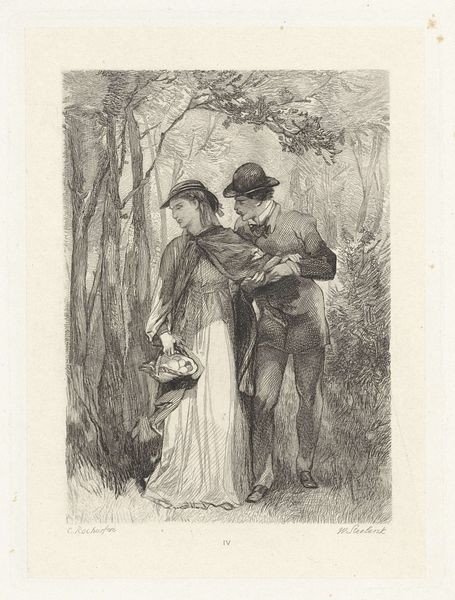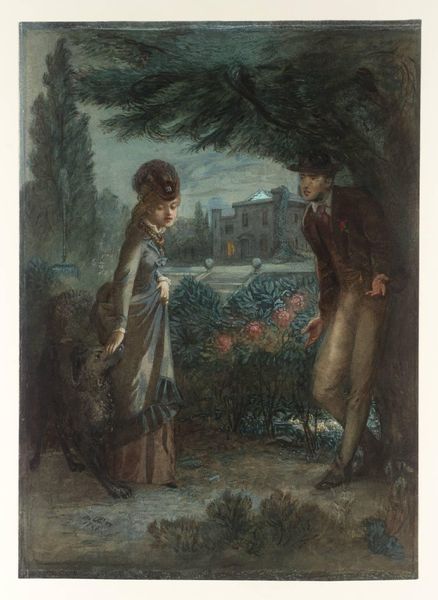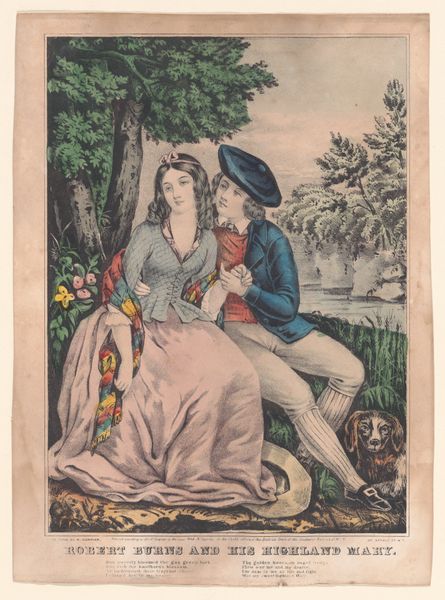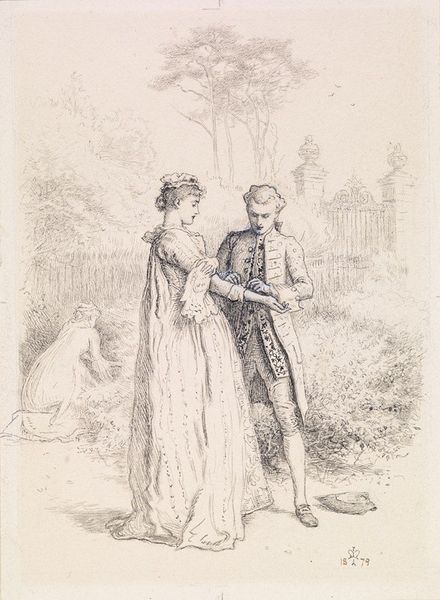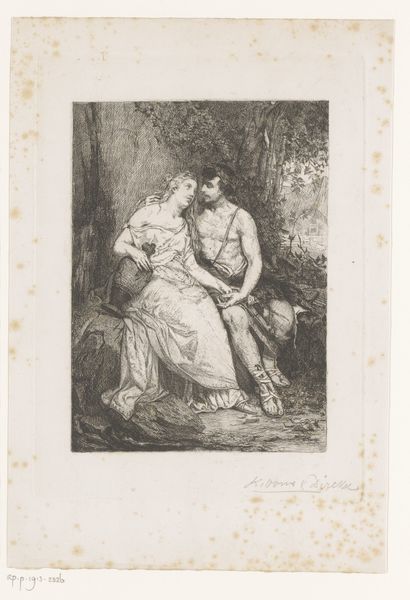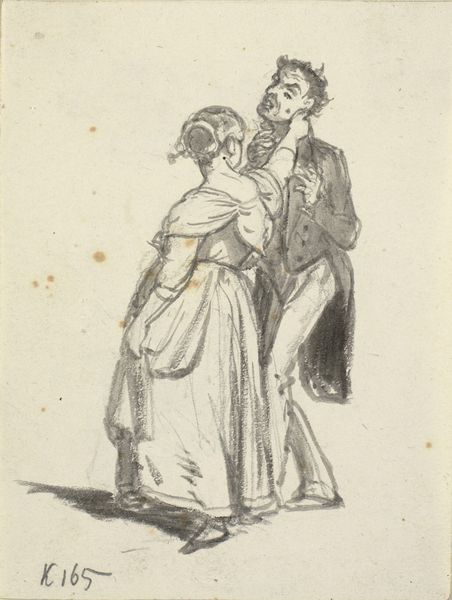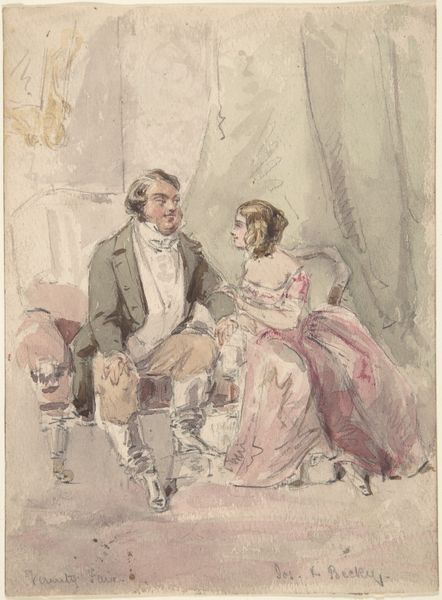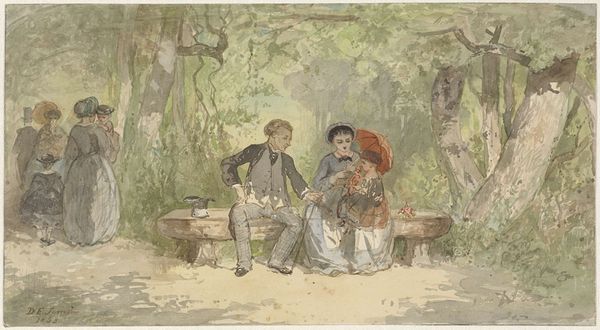
Dimensions: height 174 mm, width 120 mm
Copyright: Rijks Museum: Open Domain
Editor: So, here we have "Verliefd stel in het bos" - "Loving couple in the woods". It’s a watercolor drawing by Herman Frederik Carel ten Kate, sometime between 1832 and 1891. The sepia tones give it a romantic, slightly melancholic feel. What social commentary might Ten Kate be making here, depicting this intimate scene in the forest? Curator: That's a perceptive question. Considering Ten Kate’s background and the social norms of the 19th century, this artwork isn't just about a loving couple. The landscape tradition itself often reflected ideas of national identity, escape, or social critique. Ask yourself, how does this image speak to contemporary debates around public versus private spaces in the Netherlands? The clothing alone hints at social standing, suggesting these were likely individuals with certain expectations and freedoms. Editor: So the forest becomes a kind of forbidden zone, where societal rules are relaxed? Curator: Exactly! The setting then heightens the emotional intensity. Also, we must consider that landscape paintings served often as vehicles for projecting certain class-related social norms onto the land and its perception. How would the reception of this piece differ between urban and rural audiences? Editor: That makes a lot of sense! I hadn’t thought about the power dynamics embedded within seemingly idyllic scenes like this. So, beyond the immediate beauty, there's a subtle negotiation of social boundaries at play. Curator: Precisely. Understanding those historical contexts lets us move beyond surface appearances and perceive the deeper meanings embedded within even the most seemingly straightforward images. Consider what impact the increased affluence of a patron might play in these artworks. Editor: This really does broaden my understanding of the work. Thank you for showing me a more historically informed view.
Comments
No comments
Be the first to comment and join the conversation on the ultimate creative platform.
